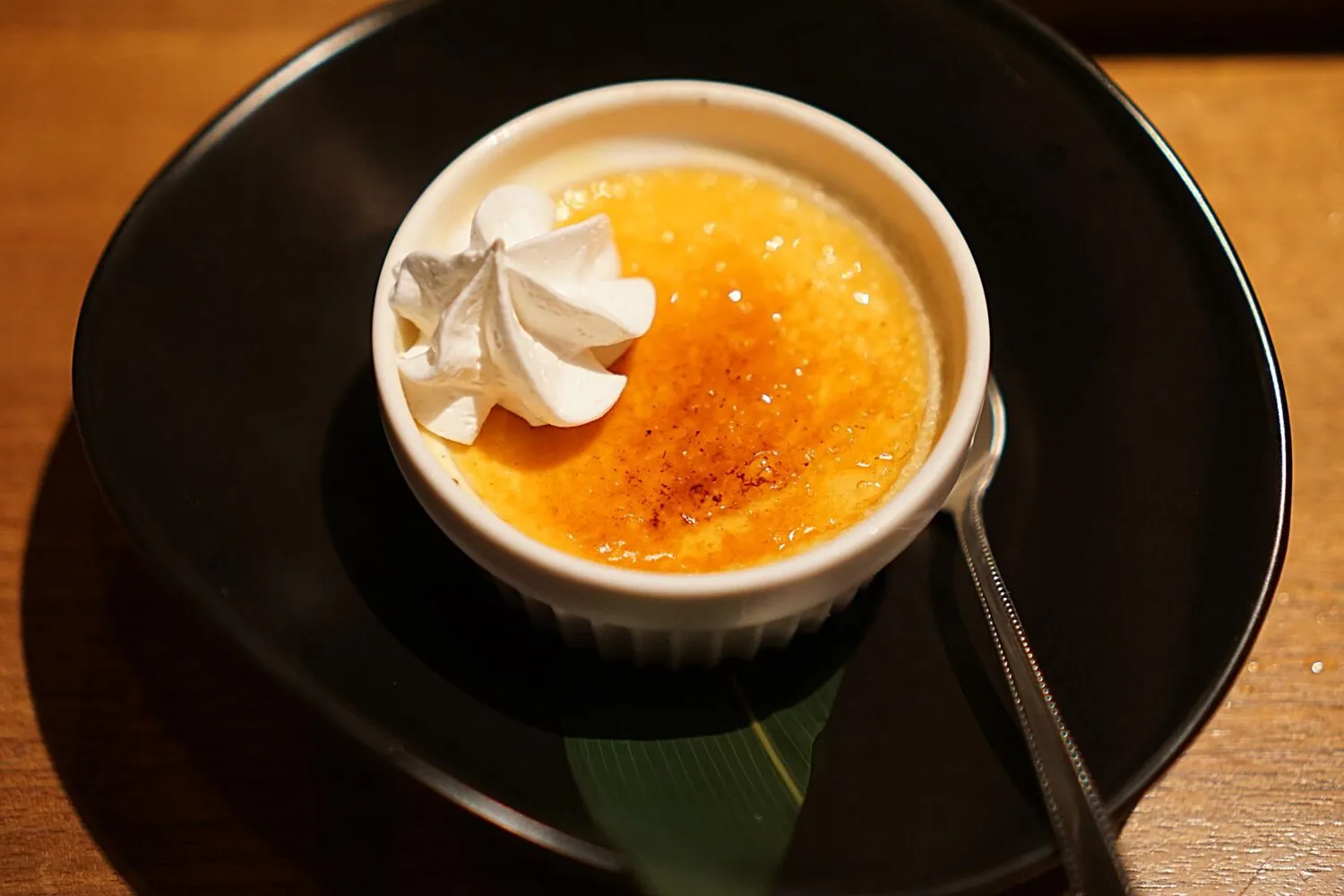
Crêpes
Based on online reviews, the crêpes are a popular and well-regarded item at Le Jeanne Hachette.
Nutrition Facts
* The % Daily Value (DV) tells you how much a nutrient in a serving of food contributes to a daily diet. 2,000 calories a day is used for general nutrition advice.
Le Jeanne Hachette Salon De The - Brasserie
Crêpes have a long history, originating in the Brittany region of France. They were initially a simple peasant food made from buckwheat flour and water, cooked on a hot stone or griddle. Over time, the recipe evolved, incorporating wheat flour, eggs, and milk. Crêpes quickly gained popularity throughout France and beyond, becoming a staple in both savory and sweet dishes.
Crêpes are deeply ingrained in French culture, often associated with celebrations and everyday life. They're a popular street food, a common breakfast item, and a beloved dessert. The act of making and sharing crêpes is often a social event.
La Chandeleur (Candlemas)
Crêpes are traditionally eaten on February 2nd, during La Chandeleur (Candlemas). This celebration marks the presentation of Jesus at the Temple and is believed to bring good luck if you can flip a crêpe in the pan with one hand while holding a coin in the other.
Regional Variations
Different regions of France have their own variations of crêpes. In Brittany, savory buckwheat crêpes (galettes) are a regional specialty, often served with cider.
Street Food Staple
Crêpes are a popular and readily available street food in France, sold from crêpe stands and food trucks across the country.
Crêpes are incredibly versatile, showcasing a wide range of flavors depending on the fillings and toppings. They can be savory, featuring ingredients like cheese, ham, vegetables, and eggs, or sweet, with options like Nutella, fruit, jam, and whipped cream. The crêpe itself is subtly flavored, providing a neutral base for the other ingredients to shine.
The base crêpe is typically made from flour (wheat or buckwheat), eggs, milk (or water), and melted butter. Savory crêpes often use buckwheat flour (galettes), lending a slightly nutty and earthy flavor. Sweet crêpes use wheat flour and sometimes include sugar and vanilla extract for added sweetness. The flavor profile is significantly impacted by the fillings: savory crêpes can be rich and savory from cheeses and meats, while sweet crêpes offer a delightful combination of sweetness and fruitiness. Le Jeanne Hachette's crêpes, judging from reviews, are likely well-balanced and expertly filled.
Batter Consistency
The batter should be thin and pourable, similar to heavy cream. If it's too thick, add a little more milk. Let the batter rest for at least 30 minutes (or up to several hours) to allow the gluten to relax, resulting in a more tender crêpe.
Pan Temperature
The pan should be hot but not smoking. A non-stick crêpe pan or skillet is ideal. Lightly grease the pan with butter or oil between each crêpe to prevent sticking.
Spreading the Batter
Pour a small amount of batter onto the center of the hot pan, then quickly swirl the pan to spread the batter into a thin, even circle. Work quickly to avoid the crêpe from cooking unevenly.
Flipping the Crêpe
Once the edges of the crêpe start to lift and the underside is lightly golden brown, use a thin spatula to carefully flip it over. Cook for another minute or two until the second side is also lightly golden brown.
Explore additional Dessert dishes and restaurants
Explore DessertDiscover top dining spots and culinary experiences in Beauvais.
Explore BeauvaisLearn more about the food culture, restaurant scene, and culinary heritage of France.
Explore France